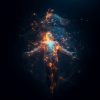Unveiling the Mysteries of Consciousness: A Comprehensive Guide to Exploration
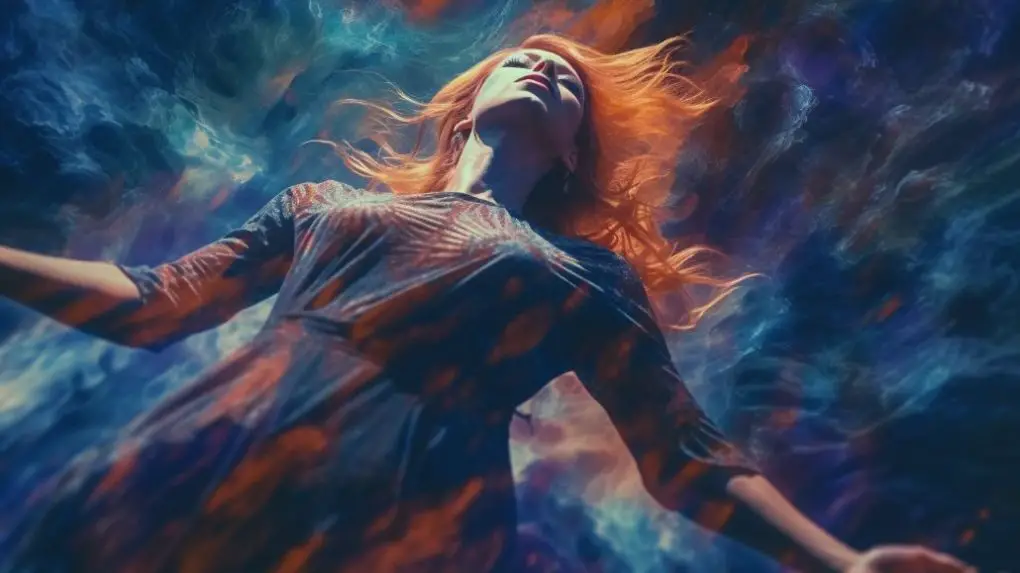
We’re going to take you on an immersive journey into the depths of your own mind. We’ll explore the different states and experiences of consciousness, such as sleep paralysis, examine how technology intertwines with our understanding of the mind, and look at the big questions that have yet to be answered. Ready for a mind-bending exploration of the biggest mystery known to mankind? Let’s get started.
Key Takeaways
- Exploring consciousness involves understanding awareness of our existence and environment, including the importance of quality sleep.
- Altered states refer to divergent mental states from usual wakefulness, such as dreaming or meditation-induced experiences.
- Advances in AI and neurotechnology provide new insight into the nature of consciousness with implications for human abilities.
Categories in This Section
- Sleep and Dreams
- Out of Body Experiences
- Reality Shifting
- Remote Viewing
- Astral Projection
- Lucid Dreaming
- Sleep Paralysis

Understanding Consciousness
Our understanding of consciousness pertains to an individual’s awareness of their existence and their surroundings. It’s an intricate dance of understanding the world around us and our place within it. As we sleep, our mind enters different stages, each playing a vital role in our overall well-being. The sleep cycle consists of three Non-Rapid Eye Movement (NREM) stages, and a Rapid Eye Movement (REM) stage, which is when we dream.
Sleep is not just a passive state of rest, it’s a complex and dynamic process vital to our health. The quality and length of our nighttime sleep can influence different areas of our physical and mental health, underscoring the importance of prioritizing restful sleep, including light sleep, and finding ways to fall asleep with ease. Sleep research has shown that addressing sleep disorders can be crucial to achieving better sleep quality.
The Essence of Existence
The essence of existence involves diving into the profound depths of our consciousness. It’s about delving into philosophical perspectives and scientific theories concerning the nature of consciousness, including the sleep wake cycle. Philosophers and scientists have put forth various theories to explain consciousness. Some believe it’s an emergent property of the brain, while others argue it’s an illusion or an intrinsic property of the universe. From the Global Workspace Theory to the Integrated Information Theory, there’s a whole host of scientific theories that attempt to demystify consciousness. These theories propose that consciousness might be a basic property of the universe, an emergent property of the brain, or perhaps an illusion.
The essence of existence isn’t just a philosophical or scientific question; it’s a deeply personal one. It’s about understanding our place in the world and making sense of our thoughts, emotions, and experiences. Enhancing our comprehension of existence can steer us towards leading more mindful, fulfilled lives.
Mindfulness Unveiled
Mindfulness involves being entirely present, aware of our surroundings and activities, without being overly reactive or overwhelmed. It’s about paying attention to our thoughts, emotions, and physical sensations in the present moment. This practice of awareness can help us connect with our inner selves, including the astral body, a non-physical counterpart of the physical body.
The primary mindfulness practices consist of:
- Meditation
- Mindful eating
- Body scan
- Walking meditation
- Mindful movement such as yoga or qigong
These practices can have a profound impact on our brain waves and overall mental health, potentially reducing the risk of nervous and mental disease.
Scientific research has shed light on the benefits of mindfulness, indicating that it can enhance subjective well-being, reduce anxiety and depression, and improve psychological symptoms and attention. Mindfulness isn’t just a stress-relief tool; it’s a way of connecting with our inner selves and the world around us. Practicing mindfulness can enhance our mental well-being and overall quality of life, encompassing the quality of our sleep.
Altered States of Consciousness
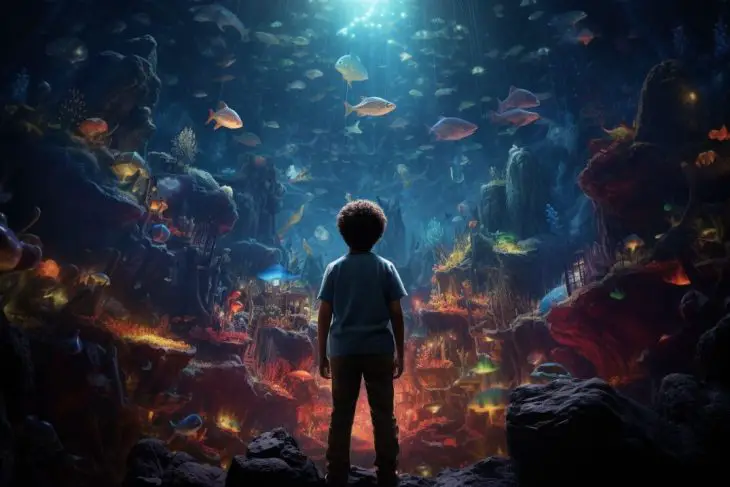
As we venture further into consciousness studies, we come across the concept of altered states. These refer to states of mind that vary from an individual’s typical waking state of consciousness. From dreaming to hallucinating, these altered states provide a unique window into the workings of the human mind. The ability to recall dreams, for instance, can be influenced by various factors. The content of our dreams, often categorized into interpersonal conflicts, sexual motivations, and social concerns/fear of embarrassment, offer a glimpse into our unconscious desires. Even bereavement can significantly influence the nature of our dreams. The mystery of dreams that seem to foretell the future? It’s likely due to coincidence, a false recollection, or the unconscious mind connecting pre-existing information.
Altered states of consciousness extend beyond just dreams. They can include experiences such as out-of-body experiences, near-death experiences, and meditation-induced states. These states provide a unique opportunity to investigate the mechanisms of consciousness and the nature of our reality.
The Landscape of Altered States
Altered states of consciousness are not haphazard events; they possess their distinct terrain. They range from subtle changes in perception to considerable modifications in cognition and emotion. Dreams, for instance, are formed from our individual experiences and those encountered while awake. It is estimated that most individuals over the age of 10 years dream between 4 and 6 times per night. About 65 percent of dream reports demonstrate characteristics of recent waking life experiences. Even the areas of the brain that display increased activity during dreaming are indicative of the nature of the dream state.
Out-of-body experiences (OBEs) are another intriguing aspect of the landscape of altered states. In an OBE, the person experiences a sensation of floating outside their physical body, observing it from an alternate viewpoint. The causes of an OBE can vary, ranging from medical conditions to certain experiences. However, there’s no evidence to affirm that consciousness can remain confined outside of the body after an OBE.
Neuroscience of Altered States
As we journey into the domain of altered states, we come across the intriguing field of neuroscience. The neuroscience associated with altered states of consciousness necessitates understanding the role of brain structures and neurotransmitters. Structures like the primary motor cortex, attention or working memory networks, and the anterior precuneus, all play a vital role in the conscious processing and formation of self-awareness. Neurotransmitters such as acetylcholine are vital as they can increase alertness, sustain attention, and influence learning and memory.
The pineal gland is believed to play a significant role in altered states of consciousness, particularly in the production and release of dimethyltryptamine (DMT), a potent hallucinogenic substance. In altered states of consciousness, there are notable modifications in brain functional connectivity architecture and blood flow patterns, which can influence the arousal and awareness components of consciousness.
Categories of Consciousness Exploration
Venturing further into consciousness studies reveals various categories of consciousness exploration. These categories include:
- Lucid dreaming
- Out-of-body experiences
- Reality shifting
- Remote viewing
- Astral projection
- Sleep paralysis
Each category offers a distinct perspective on the nature of consciousness and provides unique insights into the workings of the human mind.
Lucid dreaming is a fascinating category of consciousness exploration. In a lucid dream, the dreamer is aware that they are dreaming and may even have some level of control over the dream. They can manipulate the dream environment, interact with dream figures, and even attempt to explore their subconscious desires through lucid dreams.
Out-of-body experiences (OBEs), on the other hand, involve a sensation of floating outside one’s physical body and observing it from an alternate viewpoint.
Lucid Dreaming
Lucid dreaming is an intriguing phenomenon where the dreamer becomes aware that they are dreaming and may even have the ability to control their dream. Some individuals experience lucid dreaming spontaneously, while others claim to have the ability to exercise a higher degree of control over their dreams. Lucid dreaming provides a range of benefits like improved problem-solving abilities, increased self-awareness, and the capacity to manipulate dream elements. It is suggested that the thoughts we have right before going to sleep may have an impact on our dreams. Thus, it is possible for our bedtime musings to influence the topic of our dreams.
Lucid dreaming can serve as a potent instrument for personal growth and self-discovery. By becoming aware in our dreams, we can:
- Explore our subconscious mind in a safe and controlled environment
- Gain significant insights
- Develop a deeper understanding of our own thoughts, emotions, and desires.
Out of Body Experiences
Out-of-body experiences (OBEs) are another fascinating category of consciousness exploration. In an out of body experience, the person experiences a sensation of floating outside their physical body, observing it from an alternate viewpoint. Various beliefs and theories surround OBEs. Some believe that the soul or spirit leaves the body during an OBE, while others believe that certain meditative practices can lead to an OBE. It is common to have the sensation of being external to oneself during an OBE, and many individuals report having an OBE during a near-death experience.
Despite the captivating nature of OBEs, experts remain unsure if consciousness separates from the body during such experiences. The causes of an OBE can vary, ranging from medical conditions to certain experiences. However, there’s no evidence to affirm that consciousness can remain confined outside of the body after an OBE.
Reality Shifting
Reality shifting is a comparatively recent concept in the exploration of consciousness. It involves shifting one’s consciousness from their current reality to another reality of their choice. The theory behind reality shifting is based on the concept of the Multiverse Theory, which posits that there are multiple parallel realities or universes. While there is no scientific evidence to support reality shifting, it has garnered a large following, especially among younger audiences.
Techniques used to achieve an altered state of consciousness include:
- The Raven Method
- The Pillow Method
- The Heartbeat Method
- The 369 Method
- The No-Sleep Method
- The Blanket Method
- The Alice In Wonderland Method
Remote Viewing
Remote viewing is a technique that investigates the potential of acquiring information about distant people, places, or events through extrasensory perception. It’s a contested psychic ability that has been the subject of numerous scientific studies and experiments. Notable remote viewers include Ingo Swann and Joseph McMoneagle, who have worked with the US Army’s remote viewing program and have been credited with successful remote viewing missions.
Despite the captivating nature of remote viewing, its validity as a psychic ability has been a topic of debate. Critics have raised questions regarding the lack of proper controls and repeatability in experiments concerning remote viewing. However, numerous investigations have yielded credible data indicating the existence of remote viewing.
Astral Projection
Astral projection is a type of consciousness exploration wherein individuals believe they can project their consciousness beyond their physical body. It’s often associated with out-of-body experiences and is believed to be a means of exploring alternate realities or dimensions. The practice of astral projection involves reaching a trance-like state, invoking spiritual protection, and using techniques such as meditation, deep breathing, and gradual muscular relaxation.
Despite astral projection’s captivating nature, it’s worth mentioning that no scientific evidence supports its existence. However, individuals who have engaged in astral projection have reported sensations such as:
- numbness
- full body vibrations
- tingling
- heaviness or weightlessness
- floating sensations
Further research is needed to understand the nature of astral projection and its potential implications for our understanding of consciousness.
Sleep Paralysis
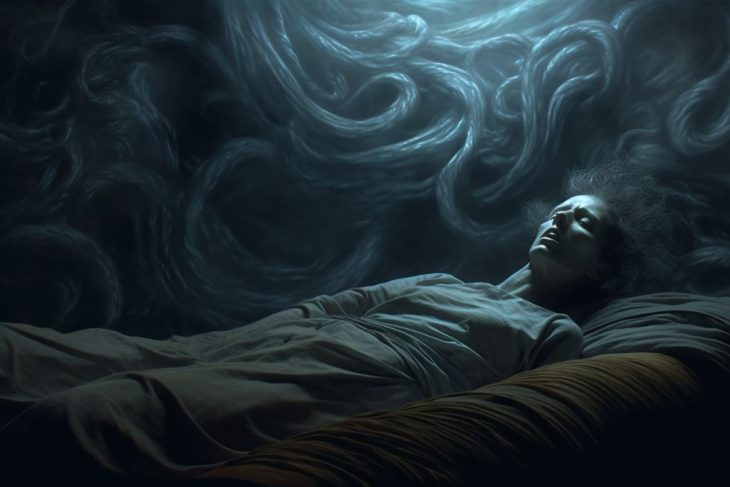
Sleep paralysis is a phenomenon where individuals cannot move or speak while transitioning between sleep and wakefulness. It’s a common phenomenon that many people experience at least once in their life. Sleep paralysis can be linked to various factors, including:
- Sleep deprivation
- Stress
- Anxiety
- Certain medications
The experience of sleep paralysis, a type of sleep disorder, can be quite frightening, as individuals often report experiencing vivid hallucinations, such as The Dweller on The Threshold during these episodes.
Although sleep paralysis can be a terrifying experience, it’s generally safe and can be handled with a few straightforward techniques. Cognitive behavioral therapy, relaxation techniques, and certain medications may help to alleviate the symptoms of sleep paralysis.
By understanding the nature of sleep paralysis, which often occurs during rem sleep, we can better manage these episodes and gain further insights into the workings of our consciousness.
Sleep Paralysis in Popular Culture: TV and Movie Depictions
Sleep paralysis, a condition characterized by temporary inability to move or speak while falling asleep or upon waking, has been a subject of intrigue in popular culture. Its mysterious nature and eerie experiences often make it a fascinating plot device in TV shows and movies. This section will explore some notable depictions of sleep paralysis in popular media.
One of the most famous instances is in the Netflix series “The Haunting of Hill House.” In this series, one of the main characters, Luke, suffers from sleep paralysis. His experiences are depicted as terrifying episodes where he is visited by a ghost from the haunted house his family once lived in. The portrayal of sleep paralysis in this series is dramatic and chilling, emphasizing the fear and helplessness that can accompany the condition.
In the movie “Dead Awake,” sleep paralysis takes center stage as the primary plot. The film tells the story of a woman who must save herself and her friends from an ancient evil that preys on victims while they’re paralyzed in their sleep. While the film takes creative liberties with the condition, it effectively communicates the terror that can be associated with sleep paralysis.
Another notable mention is the episode “Sleep No More” from the “Doctor Who” series. In this episode, sleep dust creatures attack people during their sleep, and the victims are paralyzed and unable to defend themselves, mirroring the sensations of sleep paralysis.
In all these depictions, sleep paralysis is often associated with supernatural occurrences, which can contribute to the fear and misunderstanding surrounding the condition. While these dramatizations can be entertaining and engaging, it’s important to remember that real-life experiences of sleep paralysis, although can be frightening, are a common sleep disorder and not scientifically linked to any supernatural entities.
These portrayals of sleep paralysis in popular media reflect the cultural fascination with this mysterious sleep phenomenon. They offer dramatic interpretations that, while often veering from the scientific understanding, capture the fear and helplessness that can accompany sleep paralysis.
Consciousness and Technology

As our comprehension of consciousness evolves, we are also observing a swift progression in technology. The relationship between consciousness and technology is intricate and multifaceted, offering a unique perspective on the nature of consciousness. From enhancing human prosperity to potentially becoming a destructive force, technology’s role in shaping our understanding of consciousness can’t be understated. It’s even believed that technology can merge our minds with machines, thus raising queries concerning the essence of consciousness.
Artificial intelligence (AI) models aim to imitate human consciousness by simulating thought processes, understanding, and behavior. Neuralink, a neurotechnology company founded by Elon Musk, aims to develop a brain-machine interface that can potentially unlock human potential and enhance the quality of life for those with unmet medical needs. These advancements in technology are not only transforming our understanding of consciousness but are also reshaping our future.
Artificial Intelligence
Artificial Intelligence (AI) is a technique of enabling computers and software to think in a manner akin to the human mind. It dates back to the late 1950s when computers became more readily available, faster, and more affordable. AI operates by combining extensive datasets with sophisticated algorithms to discern patterns and characteristics. From Narrow AI to Cognitive Computing, there’s a whole host of AI types that attempt to replicate human consciousness.
While current AI systems lack the complexity and embodied nature of human consciousness, they offer a fascinating insight into how human consciousness could potentially be replicated in machines. This could transform our understanding of consciousness and open up new possibilities for exploration.
Neuralink
Neuralink, a neurotechnology company established by Elon Musk, aims to create a direct link between the human brain and computers or other devices. It operates by implanting a device into the brain that is equipped with electrodes, which are used to record and activate neural activity. This enables communication between the brain and external devices, potentially enhancing our understanding of consciousness.
Neuralink’s technology bears the potential to enhance human consciousness in multiple ways. It can bolster human cognitive abilities, facilitate communication, and improve the lives of individuals with serious brain conditions. The potential implications for human consciousness are yet to be fully understood, but they promise to be truly transformative.
Transhumanism
Transhumanism is a movement grounded in philosophy and science, advocating for the utilization of technology to enhance human abilities. It’s rooted in several key concepts, such as:
- Human enhancement
- Posthumanism
- Ethical considerations
- Rationalism and empiricism
- Individualism and autonomy
Transhumanism pertains to human consciousness by investigating the possibility of augmenting and surpassing human cognitive abilities.
The future envisioned by transhumanists is one where humans transcend their biological limitations through the use of technology. This could involve everything from:
- genetic engineering
- nanotechnology
- brain-computer interfaces
- artificial intelligence
The implications for human consciousness are profound, promising a future where the boundaries between humans and machines become increasingly blurred.
Conclusion
The enigmas of consciousness persistently captivate us, and our quest to comprehend and investigate the human mind remains an unwavering pursuit. From understanding the complexities of our existence to delving into altered states of consciousness and exploring the intersection of consciousness and technology, we’ve covered a lot of ground. Each theory, each state of consciousness, each technological advancement brings us one step closer to unraveling the enigma of consciousness. But the journey is far from over.
As we continue to advance in our understanding, we can look forward to new discoveries, insights, and breakthroughs that will further illuminate the mysteries of the human mind.
Summary
In summary, consciousness is a multifaceted concept that involves our awareness of our existence and the world around us. We explored various altered states of consciousness, such as lucid dreaming and out-of-body experiences, and delved into the neuroscience behind these states. We also looked at the intersection of consciousness and technology, examining artificial intelligence, Neuralink, and transhumanism. Each of these areas offers unique insights into consciousness and paves the way for future exploration and discovery. As we continue to delve into the mysteries of consciousness, we open the doors to a deeper understanding of ourselves and our place in the universe.
Frequently Asked Questions
What’s the cause of sleep paralysis?
Sleep paralysis is linked to sleep disorders and mental health conditions, as well as disruptions in the sleep-wake cycle due to jet lag or shift work.
How do you break out of sleep paralysis?
To break out of sleep paralysis, focus on making small body movements like moving one finger, then another. This has been reported to help people recover more quickly from an episode.
What triggers lucid dreams?
Stress, anxiety, depression, and OCD can all trigger lucid dreaming.
What is consciousness and what does it involve?
Consciousness is our awareness of our own existence and the environment around us, involving our perceptions, thoughts, emotions, and experiences. It is a complex concept that is constantly being explored and studied.
What are altered states of consciousness?
Altered states of consciousness are distinct from our normal waking state and can involve dream-like experiences, hallucinations, or out-of-body experiences.
Featured articles
Hypnopompic Hallucinations Examples – Observing Common Patterns
Dive into the mysterious world of hypnopompic hallucinations. Discover the secrets between waking and dreaming!
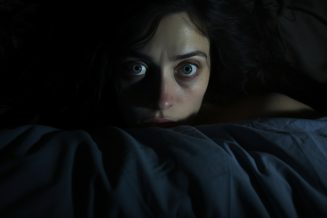
Lucid Dreaming Tips - Unpacking the Best Strategies for Lucid Dreamers
Discover the untapped realms of your mind – dive into the mesmerizing world of lucid dreaming now!

Is Lucid Dreaming Dangerous? - What You Need To Know Before Trying It Out
Dive into the mind's deepest mysteries—Unlock the enigma of lucid dreaming.
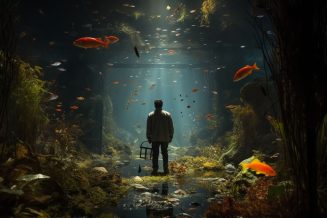
What Happens When You Don't Get Enough Sleep?
Discover the secrets of quality sleep and its impact on your life. Dive into the science behind it.
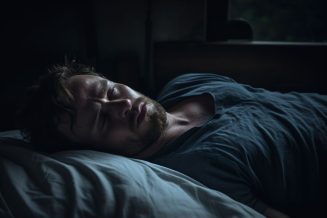
Different Types of Dreams: Exploring the World of Dreaming
Unravel the mysteries of dreams and explore their meanings.

How To Shift Reality Fast – Tips For Experienced Shifters
Dive into the art of reality shifting: reshape your world in ways you never thought possible.



